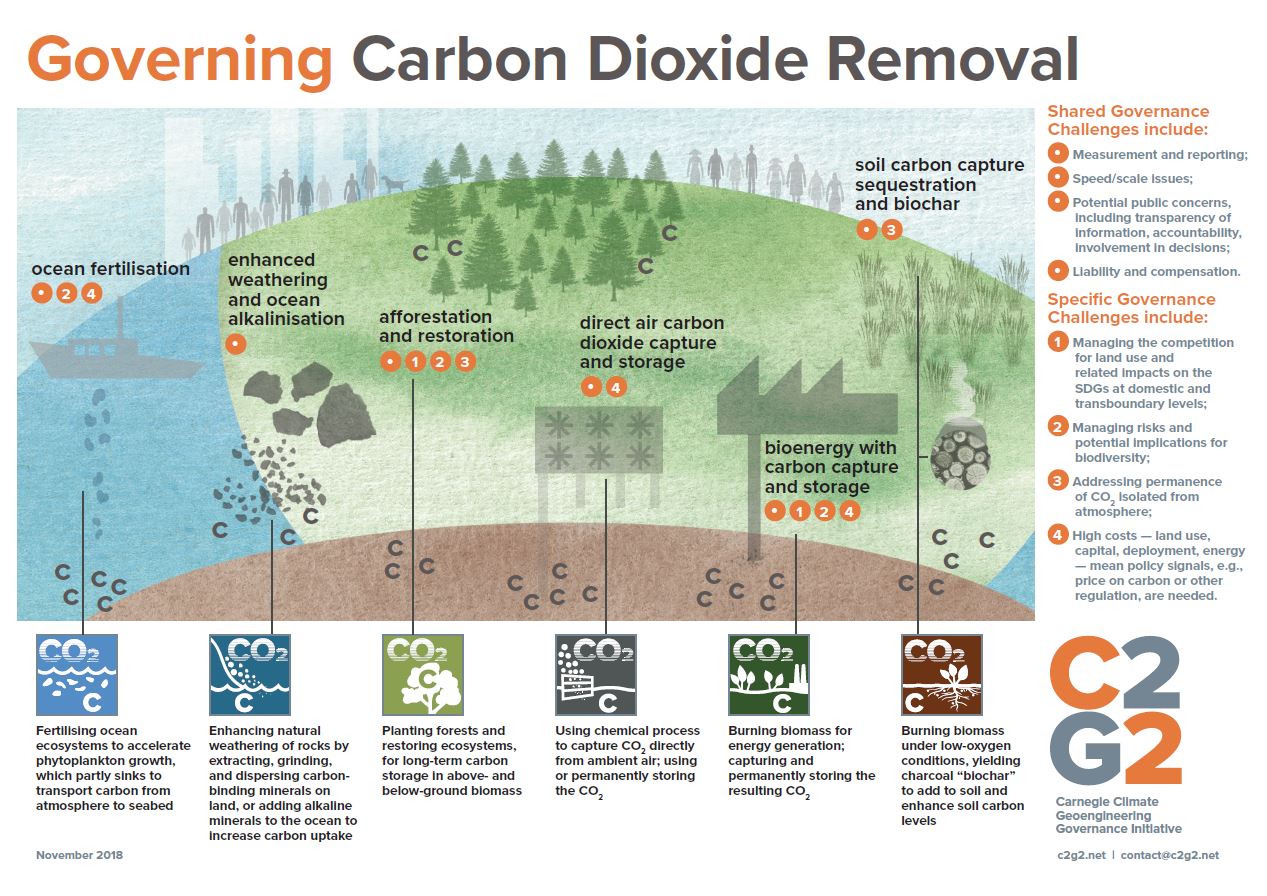Governing Large-Scale Carbon Dioxide Removal: Are We Ready?
Under the 2015 Paris Agreement, governments agreed to pursue efforts to limit global temperature increase to 1.5°C above pre-industrial levels. The current global response is only about 1/3 of what is needed.
In 2018, the IPCC Special Report on Global Warming of 1.5°C warned that all pathways to limit warming to 1.5°C envisage the large-scale removal of CO2 from the atmosphere. This is known as Carbon Dioxide Removal (CDR).
Removing CO2 from the atmosphere isn’t new, but it has never been tried at this scale. The challenge is enormous.
There are several types of Carbon Dioxide Removal, each with varying pros and cons.
But in all cases, their large-scale use would have many implications, including for the Sustainable Development Goals.

C2G2 worked with Climate Analytics to ask: are we ready?
We posed some simple questions.
- Is the international community prepared for governing CDR at this level?
- What are the governance gaps and challenges, and how might they be addressed?
And we came to some important conclusions.
- There are some rules and practices already in place which could govern large-scale Carbon Dioxide Removal, primarily within the UN Framework Convention on Climate Change.
- But they are insufficient for the scale of activity the IPCC says is needed to limit temperature rise to 1.5°C.
We found 7 priority areas where policy makers need to focus.
PRIORITY GOVERNANCE GAPS TO ADDRESS IN THE NEAR-TERM
- Narrow the mitigation gap to reduce possible future reliance on CDR options;
- Improve inventory data and information management systems;
- Put in place robust accounting rules;
- Create incentives to accelerate research, investment and implementation;
- Engage the research community in scoping specific CDR options and necessary incentives;
- Improve public awareness of potential CDR options, risks and trade-offs in planning processes;
- Improve international collaboration and cooperation.
In summary, we need to accelerate emissions reductions, AND to create the guardrails and incentives to effectively govern Carbon Dioxide Removal if we are to limit temperature rise to 1.5°C.
And we need to act fast.
1.
The scale of Carbon Dioxide Removal needed to limit global warming to 1.5°C depends on how quickly we reduce emissions.
2.
Existing provisions under the UNFCCC, the Kyoto Protocol and the Paris Agreement address some aspects of governing Carbon Dioxide Removal.
3.
Despite this, many key governance gaps and challenges for large-scale Carbon Dioxide Removal still need to be addressed.
4.
Priority gaps dealing with mitigation, information, accounting, knowledge and incentives can be addressed in the near-term.
